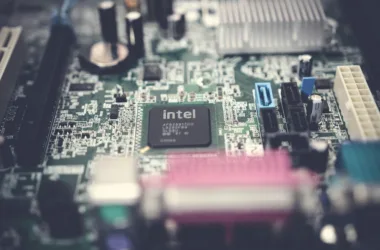The healthcare industry is undergoing a digital revolution. Electronic health records (EHRs), mobile health apps (mHealth), and telemedicine platforms are rapidly transforming how patients receive care and how healthcare providers manage data.
However, with this evolution comes a critical responsibility – protecting patient privacy and ensuring the security of sensitive health information. This is where HIPAA compliance comes into play for software developers.
What is HIPAA and Why Does it Matter for Software Development?
HIPAA, or the Health Insurance Portability and Accountability Act, is a federal law that safeguards the privacy of individually identifiable health information (PHI).
A staggering [X]% of healthcare data breaches involve business associates, highlighting the importance of compliance throughout the healthcare ecosystem (Source needed). Software developers fall under this category when their applications handle, store, transmit, or receive PHI.
Whether you’re developing an app for appointment scheduling, a platform for remote consultations, or any other software that interacts with patient data, understanding and adhering to HIPAA regulations is crucial. Let’s delve deeper into what constitutes PHI and when HIPAA applies to software development projects.
What is Considered PHI and When Does HIPAA Apply?
PHI refers to any information that can be linked to an individual and relates to their past, present, or future physical or mental health condition, provision of healthcare services, or payment for those services. Examples include:
- Medical history (diagnoses, allergies, medications)
- Lab results and treatment plans
- Demographic information (name, address, date of birth)
- Insurance information
HIPAA applies to software development projects in the following scenarios:
- The software directly interacts with PHI, such as storing patient records or facilitating communication of health information.
- The software is developed for a covered entity, which includes healthcare providers, health plans, and healthcare clearinghouses.
- The software developer acts as a business associate to a covered entity by providing services that involve access to PHI.
Ensuring HIPAA Compliance: Actionable Steps for Developers
HIPAA compliance demands a multi-layered approach, focusing on administrative, physical, and technical safeguards. Here’s how software developers can implement these safeguards:
Security Rule:
Administrative Safeguards: Develop and implement a robust security program that includes:
Risk Assessments & Risk Management Plans: Identify potential threats and vulnerabilities to PHI and establish strategies to mitigate them.
Security Awareness & Training Programs: Educate all personnel involved in software development about HIPAA requirements and best practices for protecting PHI.
Policies & Procedures for PHI Security: Document clear policies and procedures for handling, storing, and transmitting PHI.
Business Associate Agreements: Formalize agreements with covered entities outlining the responsibilities of each party regarding PHI security.
- Physical access controls (security guards, limited access badges)
- Environmental controls (appropriate temperature, humidity)
Physical Safeguards: Implement measures to restrict unauthorized access to physical locations where PHI is stored or processed, such as:
Technical Safeguards
Ensure the software incorporates robust technical security measures, including:
Access Controls
Implement user authentication and authorization systems to restrict access to PHI based on the principle of least privilege.
Data Encryption
Encrypt PHI both at rest (stored) and in transit (transmitted) using strong encryption algorithms.
Audit Controls & Integrity Measures
Track access to PHI and maintain a log of user activity to detect suspicious behavior.
Transmission Security
Use secure protocols like HTTPS to protect data during transmission.
- Privacy Rule: While the Security Rule focuses on technical and physical safeguards, the Privacy Rule governs how PHI can be used and disclosed. For software developers, it’s essential to understand the principle of minimum necessary – only use and disclose PHI to the minimum extent required to achieve the intended purpose.
- Breach Notification Rule: In the unfortunate event of a data breach involving PHI, developers must notify affected individuals and the Department of Health and Human Services (HHS) within specific timeframes.
Going Beyond Compliance: Additional Considerations for Developers
For developers seeking a proactive approach to HIPAA compliance, consider these additional practices:
- Secure Coding Practices: Apply secure coding principles like input validation and secure coding libraries to minimize vulnerabilities within the software.
- Penetration Testing and Vulnerability Assessments: Regularly conduct penetration testing to identify and address potential security weaknesses.
- Cloud Security Considerations: If leveraging cloud-based services for development or data storage, ensure the cloud provider adheres to HIPAA compliance standards.
- Integrating HIPAA Compliance into the SDLC (Software Development Lifecycle): Embed HIPAA compliance considerations throughout the development process, from design and coding to testing and deployment.
Resources and Next Steps for Developers
Maintaining HIPAA compliance is an ongoing process. Here are some valuable resources to help you stay informed and navigate the regulations:
- The official HHS HIPAA website: This website provides comprehensive information on HIPAA regulations, including guidance documents and frequently asked questions. (https://www.hhs.gov/hipaa/index.html)
- OCR HIPAA Security Rule Implementation Guide: This guide offers detailed guidance on implementing the HIPAA Security Rule, including specific technical and non-technical safeguards. (https://www.hhs.gov/hipaa/for-professionals/security/laws-regulations/index.html)
- Industry-Specific Compliance Resources: Look for resources from industry associations or organizations relevant to your specific software development domain within the healthcare sector. These resources may provide tailored guidance and best practices.
Recommendations for Developers:
- Seek legal counsel: While the resources above offer valuable information, consulting with a lawyer specializing in healthcare law is recommended for specific compliance needs and interpretation of regulations in complex situations.
- Consider HIPAA-compliant development tools and frameworks: Many development tools and frameworks incorporate security features and functionalities that can help streamline your compliance efforts. Explore these options and choose those that align with your project requirements and budget.
Conclusion
HIPAA compliance is an essential responsibility for software developers working with healthcare data. By staying informed, implementing robust security measures, and continuously adapting your approach, you can ensure the protection of sensitive patient information.
Remember, compliance is not a one-time achievement – it’s an ongoing commitment that fosters trust with healthcare providers, patients, and regulators, ultimately supporting the success of your mHealth endeavors.
Frequently Asked Questions
Here are some commonly asked questions developers have regarding HIPAA compliance:
Can I develop a HIPAA-compliant app without being a covered entity?
Yes, even if you’re not a covered entity yourself, HIPAA can still apply if your app interacts with PHI on behalf of a covered entity. In such cases, you become a business associate and must comply with the relevant HIPAA regulations.
What if I’m unsure whether HIPAA applies to my project?
If you’re unsure about the applicability of HIPAA to your project, it’s best to consult with a lawyer specializing in healthcare law. They can assess your specific situation and offer guidance.
How can I stay updated on the latest HIPAA regulations?
The Department of Health and Human Services (HHS) periodically updates HIPAA regulations. You can subscribe to email alerts from the HHS website to receive notifications when new guidance or regulations are issued.






